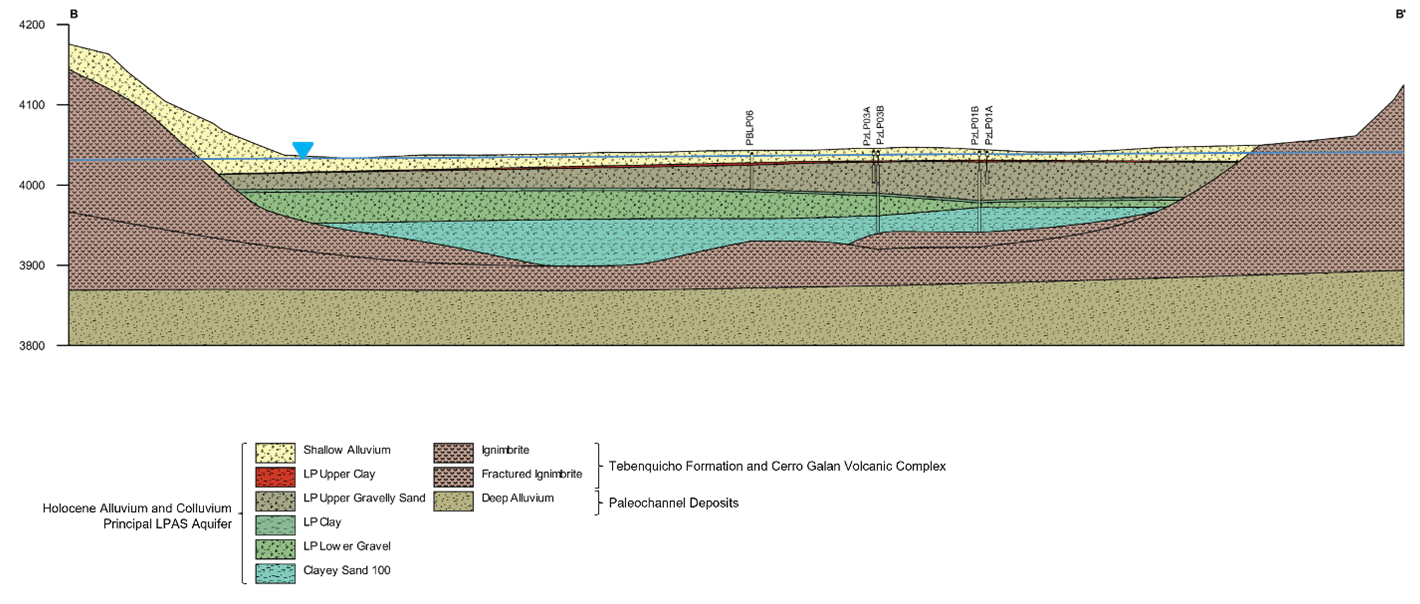
Mr. Michael Sweetenham is a hydrogeologist with more than 10 years of experience in site assessment, investigation, characterization, modeling, remediation, resources, and mining. His skill set combines the critical thinking ability and technical expertise of an analytical hydrogeologist with the computational skills of a modeler to develop conceptual site models (CSMs), 3-dimensional visualizations, and groundwater models. He provides technical expertise and works with multidisciplinary teams on small and large sites impacted with organic and inorganic constituents, including per- and polyfluoroalkyl substances (PFAS), 1,2,3-trichloropropane (1,2,3‑TCP), 1,4‑dioxane, chlorinated solvents, hydrocarbons, metals, and radionuclides. He has worked for industrial, commercial, municipal, and other clients under regulatory frameworks, including state-led cleanup programs, CERCLA, and RCRA.
Mr. Sweetenham has extensive field experience, including drilling oversight of direct push technology, hollow stem auger, sonic, air-rotary, and mud-rotary rigs to install monitoring, remediation, injection, and residential wells; collection of soil, sediment, rock, surface water, and groundwater samples; and use of high-resolution site characterization and geophysical methods to inform CSMs. He designs, implements, and manages successful projects involving in situ bioremediation (ISB)/bioaugmentation, in situ chemical oxidation (ISCO), sorption, pump and treat, phytoremediation, excavation, ex situ chemical oxidation, soil vapor extraction (SVE), sub-slab depressurization system (SSDS), and air sparging. In addition, Mr. Sweetenham is well versed with ArcGIS Pro, Leapfrog, and analytical and numerical models, including BIOSCREEN, BIOCHLOR, REMChlor, HELP, VS2DT, VLEACH, AnAqSim, ParFlow, MODFLOW, and MT3DMS.
M.S., Hydrology, Colorado School of Mines, Golden, Colorado, 2013
B.A., Geology, University of Colorado, Boulder, Colorado, 2009
Professional Geologist, Wyoming (License No. PG-4041)
Water Well Monitoring Technician, Nebraska (License No. 79728)
Hazardous Waste Operations and Emergency Response 40-Hour Certification (2013; refreshers 2014–present)
Hazardous Waste Operations Management and Supervisor 8 Hour Certification (2014)
First Aid and CPR/AED certified (2025)
SafeLandUSA (2014)
Member of National Ground Water Association
Recipient of Outstanding M.S. Student Award, Hydrologic Science and Engineering Program, Colorado School of Mines
Michael Sweetenham, P.G. Consultant
Mr. Michael Sweetenham is a hydrogeologist with more than 10 years of experience in site assessment, investigation, characterization, modeling, remediation, resources, and mining. His skill set combines the critical thinking ability and technical expertise of an analytical hydrogeologist with the computational skills of a modeler to develop conceptual site models (CSMs), 3-dimensional visualizations, and groundwater models. He provides technical expertise and works with multidisciplinary teams on small and large sites impacted with organic and inorganic constituents, including per- and polyfluoroalkyl substances (PFAS), 1,2,3-trichloropropane (1,2,3‑TCP), 1,4‑dioxane, chlorinated solv...
Mr. Michael Sweetenham is a hydrogeologist with more than 10 years of experience in site assessment, investigation, characterization, modeling, remediation, resources, and mining. His skill set combines the critical thinking ability and technical expertise of an analytical hydrogeologist with the computational skills of a modeler to develop conceptual site models (CSMs), 3-dimensional visualizations, and groundwater models. He provides technical expertise and works with multidisciplinary teams on small and large sites impacted with organic and inorganic constituents, including per- and polyfluoroalkyl substances (PFAS), 1,2,3-trichloropropane (1,2,3‑TCP), 1,4‑dioxane, chlorinated solvents, hydrocarbons, metals, and radionuclides. He has worked for industrial, commercial, municipal, and other clients under regulatory frameworks, including state-led cleanup programs, CERCLA, and RCRA.
Mr. Sweetenham has extensive field experience, including drilling oversight of direct push technology, hollow stem auger, sonic, air-rotary, and mud-rotary rigs to install monitoring, remediation, injection, and residential wells; collection of soil, sediment, rock, surface water, and groundwater samples; and use of high-resolution site characterization and geophysical methods to inform CSMs. He designs, implements, and manages successful projects involving in situ bioremediation (ISB)/bioaugmentation, in situ chemical oxidation (ISCO), sorption, pump and treat, phytoremediation, excavation, ex situ chemical oxidation, soil vapor extraction (SVE), sub-slab depressurization system (SSDS), and air sparging. In addition, Mr. Sweetenham is well versed with ArcGIS Pro, Leapfrog, and analytical and numerical models, including BIOSCREEN, BIOCHLOR, REMChlor, HELP, VS2DT, VLEACH, AnAqSim, ParFlow, MODFLOW, and MT3DMS.

Groundwater Modeling and Impact Assessment for Large-Scale Lithium Brine Operations in Northwestern Argentina
Case Study
December 20 2024- PFAS
- Site Assessment
- Fate and Transport
- Natural Resource Damage Assessment
- Mining
- Groundwater Modeling
- Groundwater Remediation
- Vapor Intrusion
- Planning and Permitting
- Hydrologic Modeling
- Modeling
- Site Investigation and Soil Remediation
- Site Investigation
- Water Management

